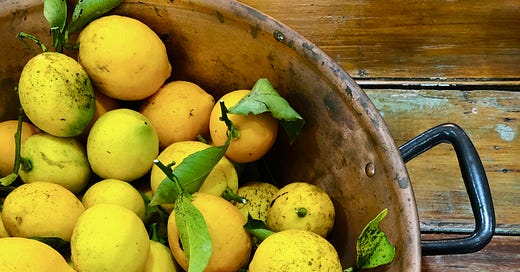In his blog, British Food: A History, Dr Neil Buttery found the first mention of lemon curd in 1944, in The Lady’s Own Cookery Book written by Lady Charlotte Campbell Bury. The recipe is quite different from what we today think of as lemon curd, in that it was actually just lemon acidulating cream to form curds, which were then separated from the whey. …
Keep reading with a 7-day free trial
Subscribe to Apples & Elderflower to keep reading this post and get 7 days of free access to the full post archives.




